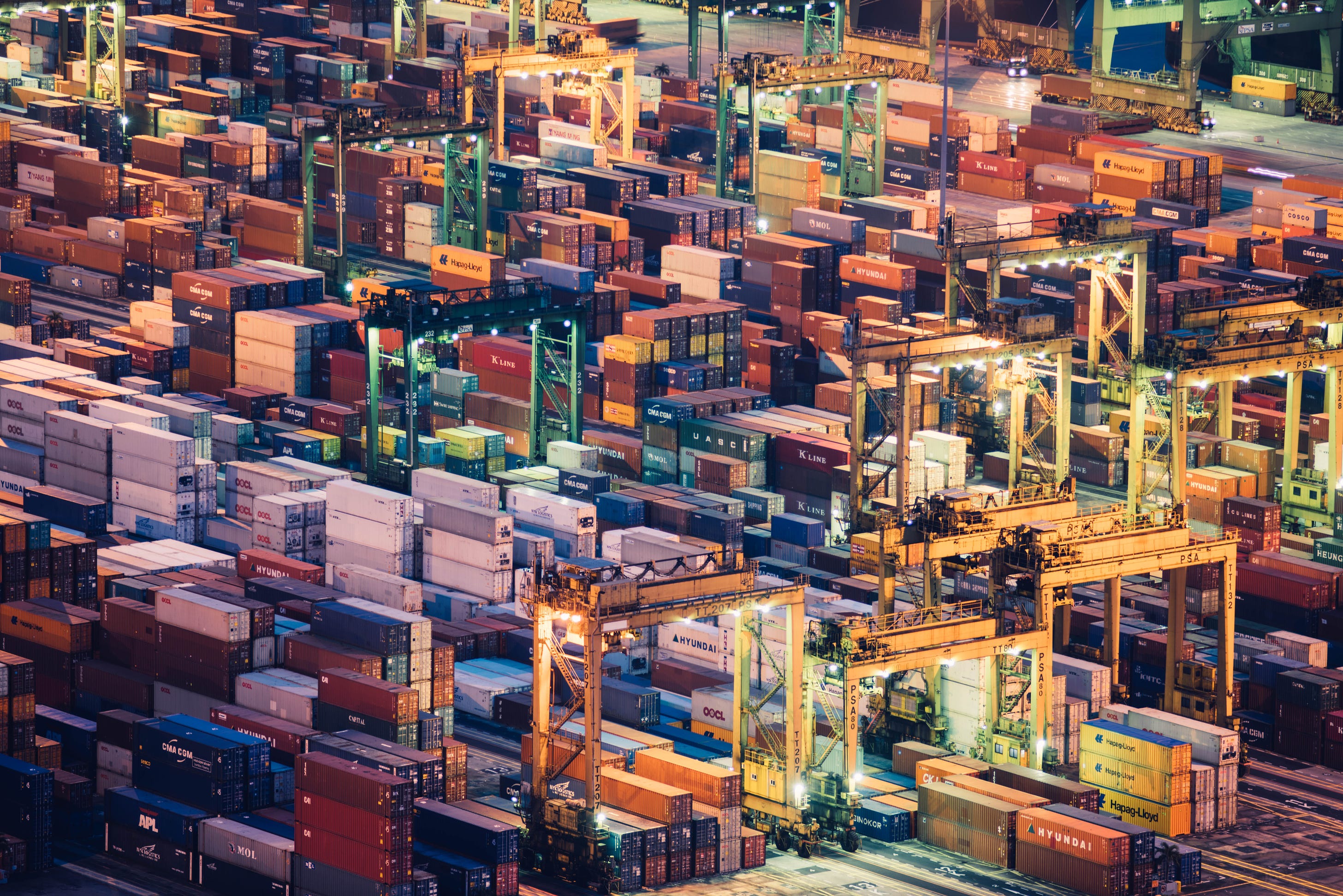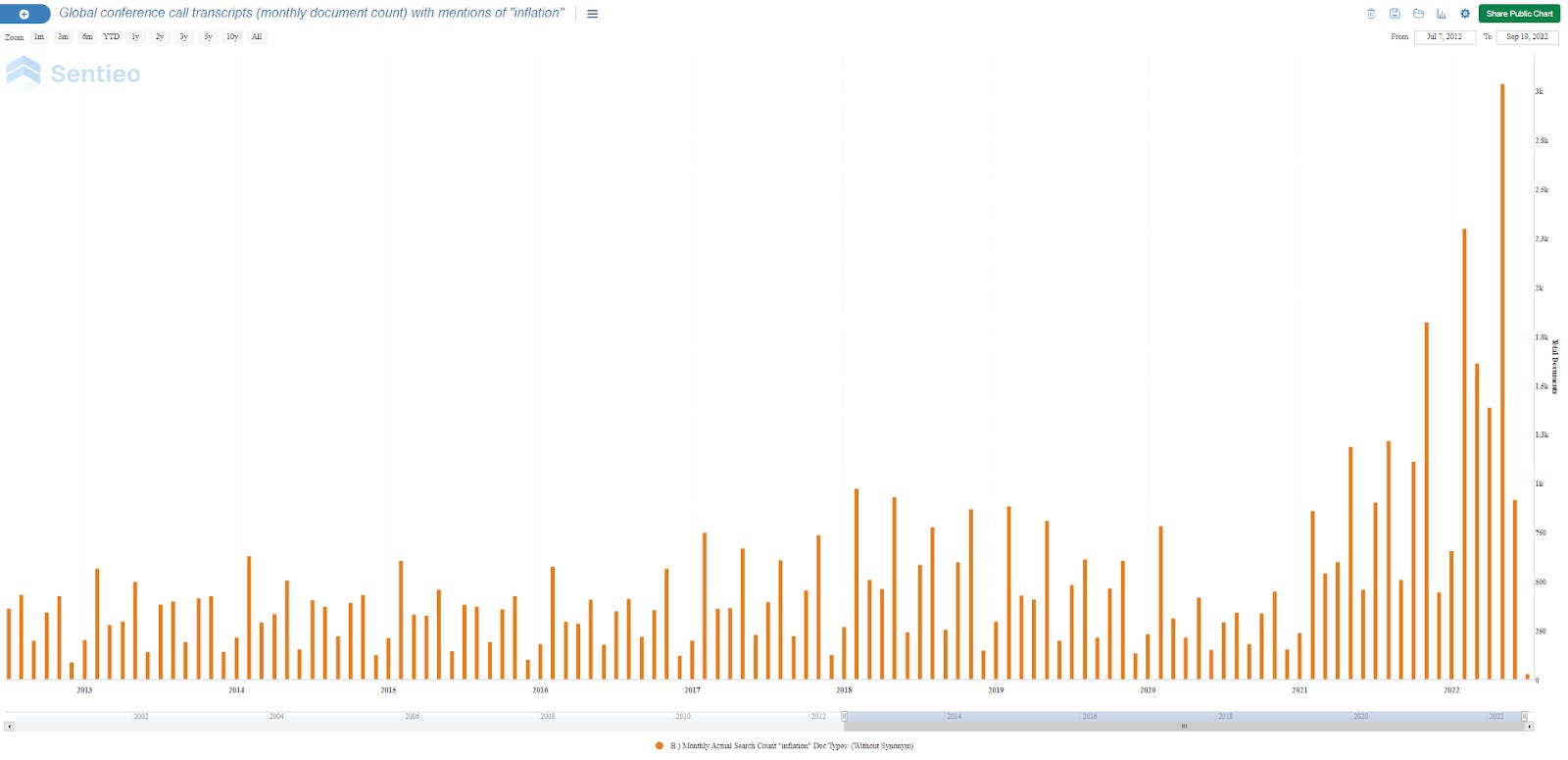The Supply Chain Is Improving, Flexport Data Shows. Will It Be Enough?
Inflation surged — in part — thanks to a broken supply chain and skyrocketing shipping costs. Now that things are getting better, can we get back to normal?
 |
In May 2021, a shipping source told me to expect inflation. His cost to ship containers from China to the U.S. had jumped from $2,000 pre-pandemic to $20,000. So companies selling imported goods — from clothing to food — would soon pass that 10X increase to us. He planned to do his holiday shopping early.
He nailed it. Inflation seemed like a faraway fear at the time. (And I mistakenly buried the inflation warning in a story about Amazon sellers’ increased costs.) But what the shipping industry saw quickly translated into broader pain. Inflation reached 8.6% this May. The Federal Reserve’s rate raises to restrain it guided the S&P 500 into a bear market. And now, to restore price stability, the Fed appears ready to induce a recession.
I was, therefore, thrilled when the same shipping source told me his $20,000 import costs had recently dropped to $8,000. As long as inflation persists, our economy will be unstable. And so, with this leading indicator heading back toward normal, it seemed like we might too. Possibly, at least.
The good news is that shipping rates are indeed falling globally, and the supply chain is righting itself. Flexport, a tech-enabled freight forwarder, has seen rates drop from highs of around $20,000 per container to $10,000. And Dave Lissman, a sales manager at importer Port Royal Sales, said he was finally seeing some easing after a long period of pain. “As of recently,” he said, “there has been some slight room for negotiation.”
Also encouraging is that Flexport has seen a 35% reduction in shipping transit times, according to Anders Schulze, its global head of ocean and trucking. So those long waits for living room furniture might start abating. And now that congested ports are loosening up, prices might fall further as idle ships come back into service. ”It's still much higher than historical averages,” Schulze said. “But it's pointing down, which is exciting.”
While rising shipping costs were indicative as prices rose, it’ll likely take more than falling rates to fix the system. The broken supply chain was part of the problem, but more significant issues persist. Generous government stimulus, for instance, helped generate massive demand for goods — which stressed the shipping system and sent prices upward — and that hasn’t abated yet. Durable good consumption is still up 20% over February 2020, according to Flexport’s chief economist Phil Levy, a dropoff from a 35% increase we saw in 2021, but still pretty high. “We were overheated,” Levy said. “It’s starting to back off somewhat.”
It will thus likely take some time for inflation to resolve. But when you consider these supply chain improvements combined with the falling costs of wheat, gas, and inputs like copper, you can see a scenario that’s more optimistic than recent headlines suggest.
For the first time in years, the people who first saw these issues are exhaling a bit, even if their good news comes with a caveat. “I'm gonna wait,” said Flexport’s Schulze of his holiday gift-buying plans. “But that's probably also driven by the fact that I'm typically a last-minute shopper.”
Inflation Worries Soar Among The World’s Top Companies (Sponsored)
After not resonating much in recent years, inflation is booming as a core concern among corporations worldwide. Last month alone, 3,000 inflation mentions appeared in corporate conference calls, up from 460 at the same time last year, according to AlphaSense. You hear these inflation concerns from companies like Walgreens, which said international freight rates are up 200%. And from Dollar Tree, which warned that a $1 increase in diesel could lead to a $63 million headwind.
To quickly take the temperature of specific sectors in the economy (and look at how they feel about specific issues) you need AlphaSense. This world-leading market intelligence tool — a powerful search engine for business information — walked away with six G2 Awards this summer, including leader in media monitoring, best support, and top financial research tool.
Get a free AlphaSense license for the next month here:
What Else I’m Reading
Twitter introduced co-tweets. Meta open-sourced its AI translation model. The UK is investigating Amazon. El Salvador’s Bitcoin experiment struggles. Axie Infinity got hacked via a fake job offer. Another crypto broker went bankrupt. Semafor’s event on trust in the media (YouTube). A long profile of Gov. Ron DeSantis. Tim Miller recalled his failed partnership with Steve Bannon. New York Magazine’s cover story on Nathan Fielder.
Number Of The Week
69%
Number of U.S. journalists who say Twitter is the social media site they use most or second-most for their jobs, according to Pew. Meanwhile, only 13% of U.S. adults say they get regularly get news on Twitter.
Quote Of The Week
“Doing my best to help the underpopulation crisis.”
Elon Musk, in a tweet of course, after Insider revealed he had twins with one of his top executives.
Advertise with Big Technology?
Advertising with Big Technology gets your product, service, or cause in front of the tech world’s top decision-makers. To reach tens of thousands of plugged-in tech insiders, please reply to this email.
How Twitter, Instagram, and Planet Build Products — With Kevin Weil
Kevin Weil is the ex-head of product at Twitter and Instagram. He's currently the president of business and product at Planet. Weil joins Big Technology Podcast to share an insider's view of how Twitter and Instagram build products, what their potential is, and how each product is dealing with big, imposing, outside forces (Elon Musk and TikTok). Stay tuned for the second half, where we discuss Planet, a fascinating company whose hundreds of satellites orbiting the earth capture a new, complete picture of our world daily.
You can listen to both shows on Apple, Spotify, or wherever you get your podcasts.
Thanks again for reading. Please share Big Technology if you like it! Also, click the heart if you want to be smooth like a ship entering its port.
Questions? Email me by responding to this email, or by writing alex.kantrowitz@gmail.com
News tips? Find me on Signal at 516-695-8680
If you liked this post from Big Technology, why not share it?




